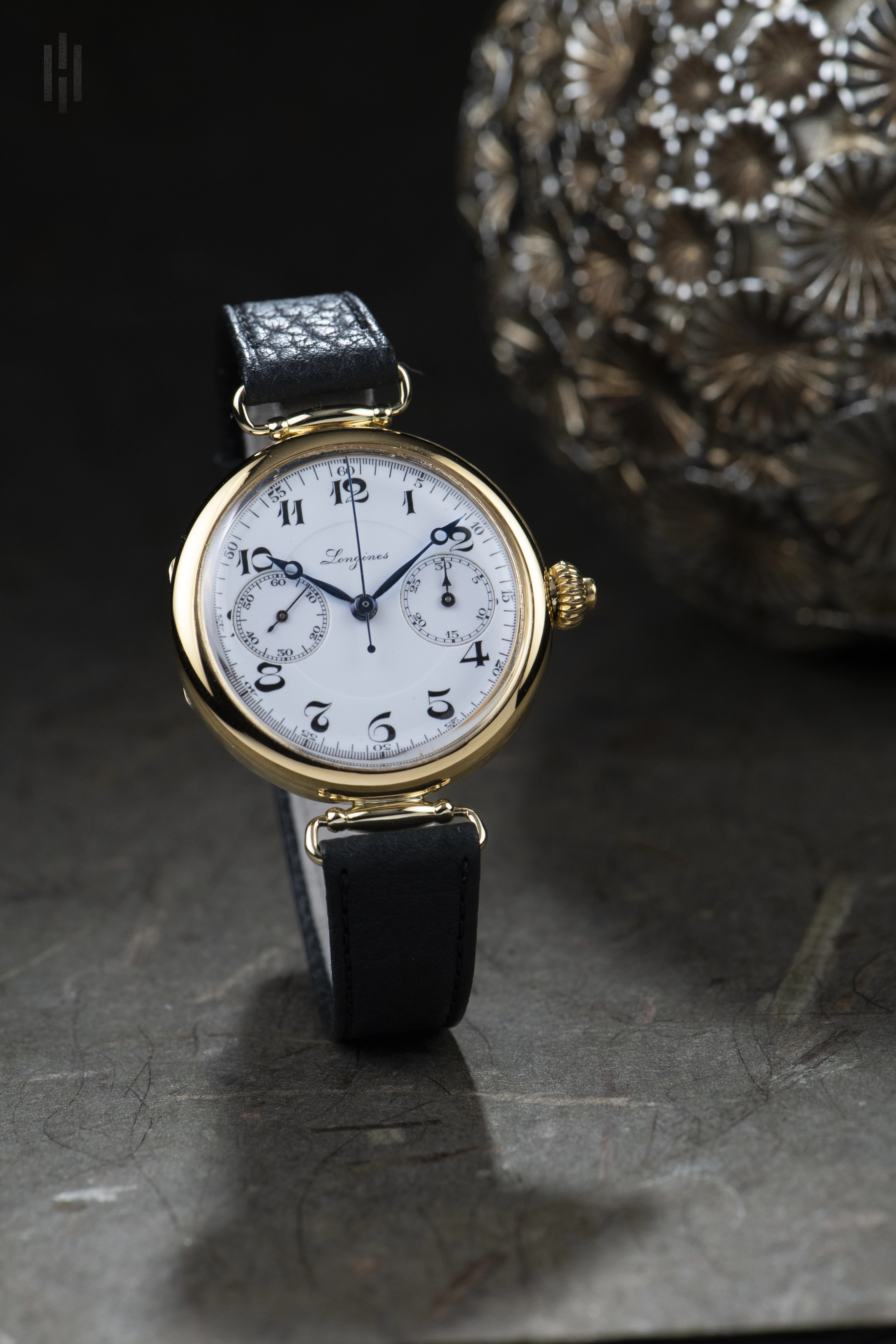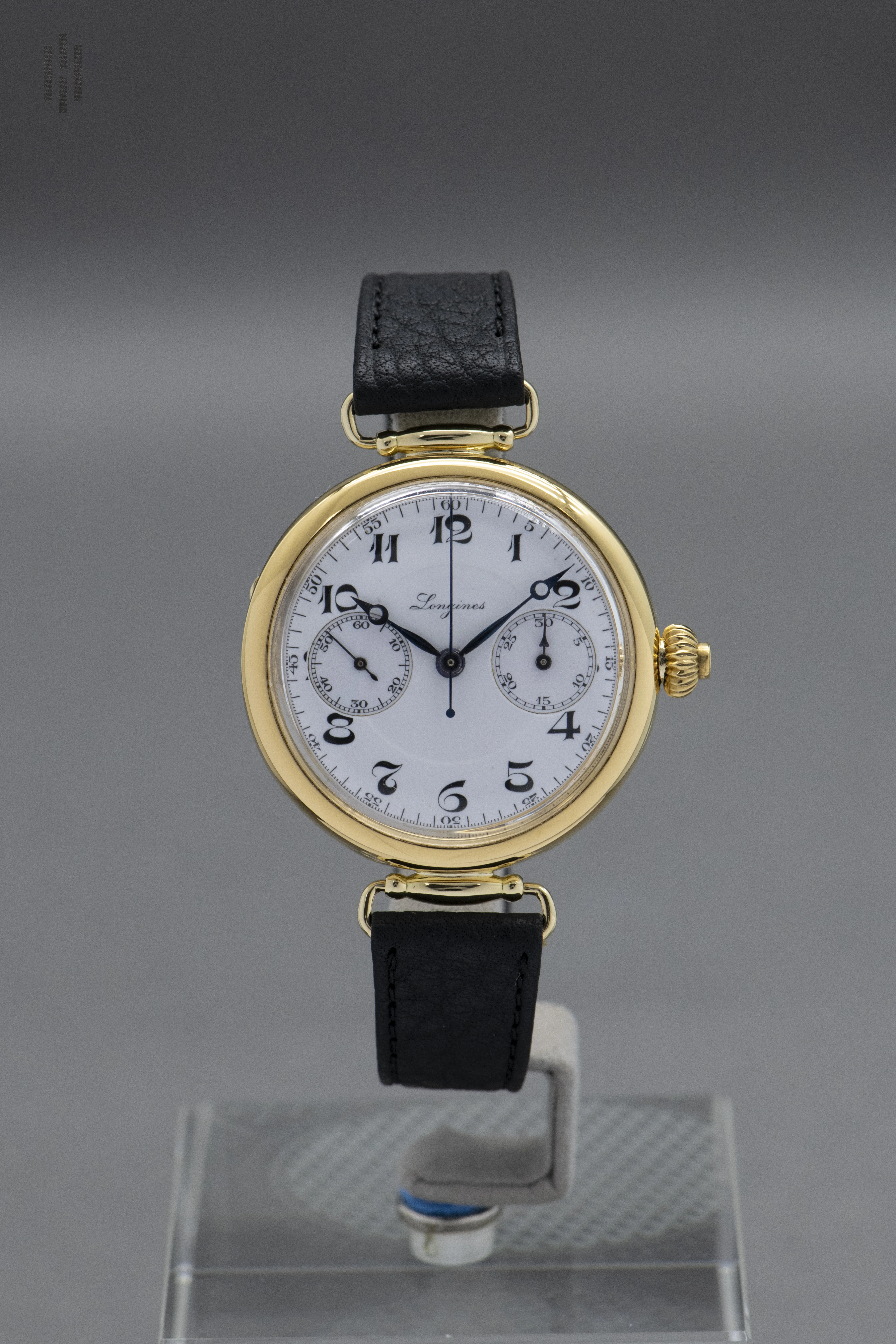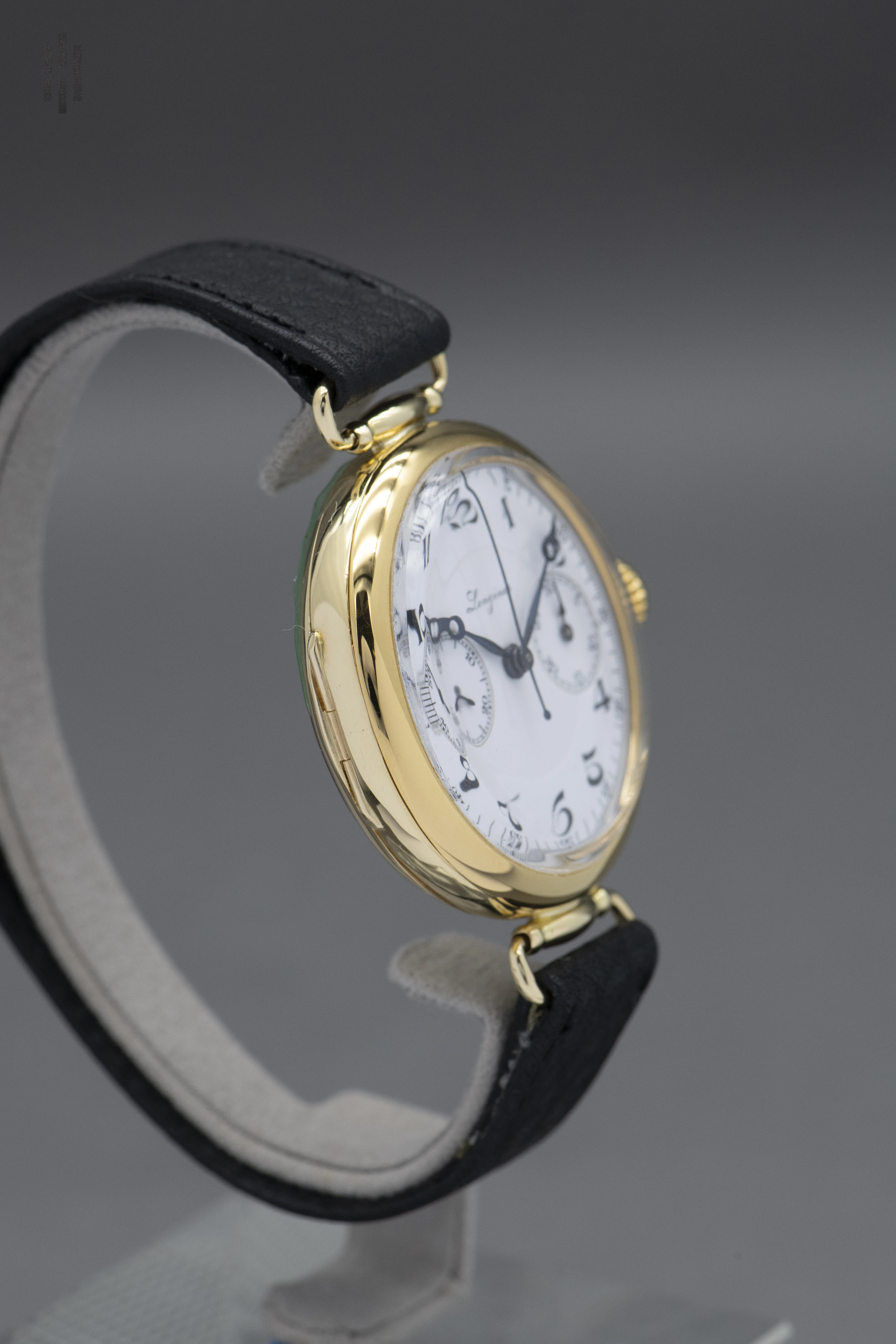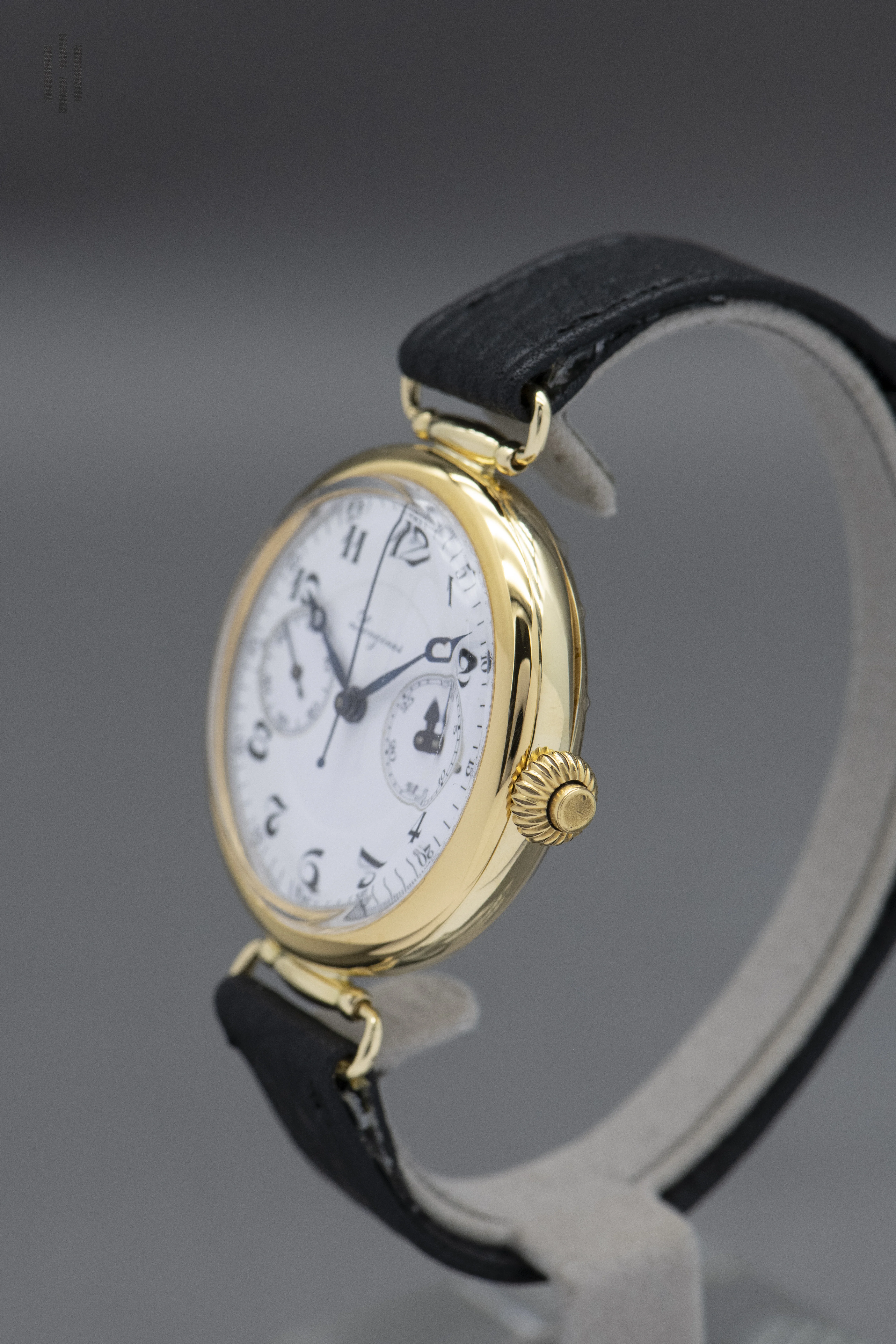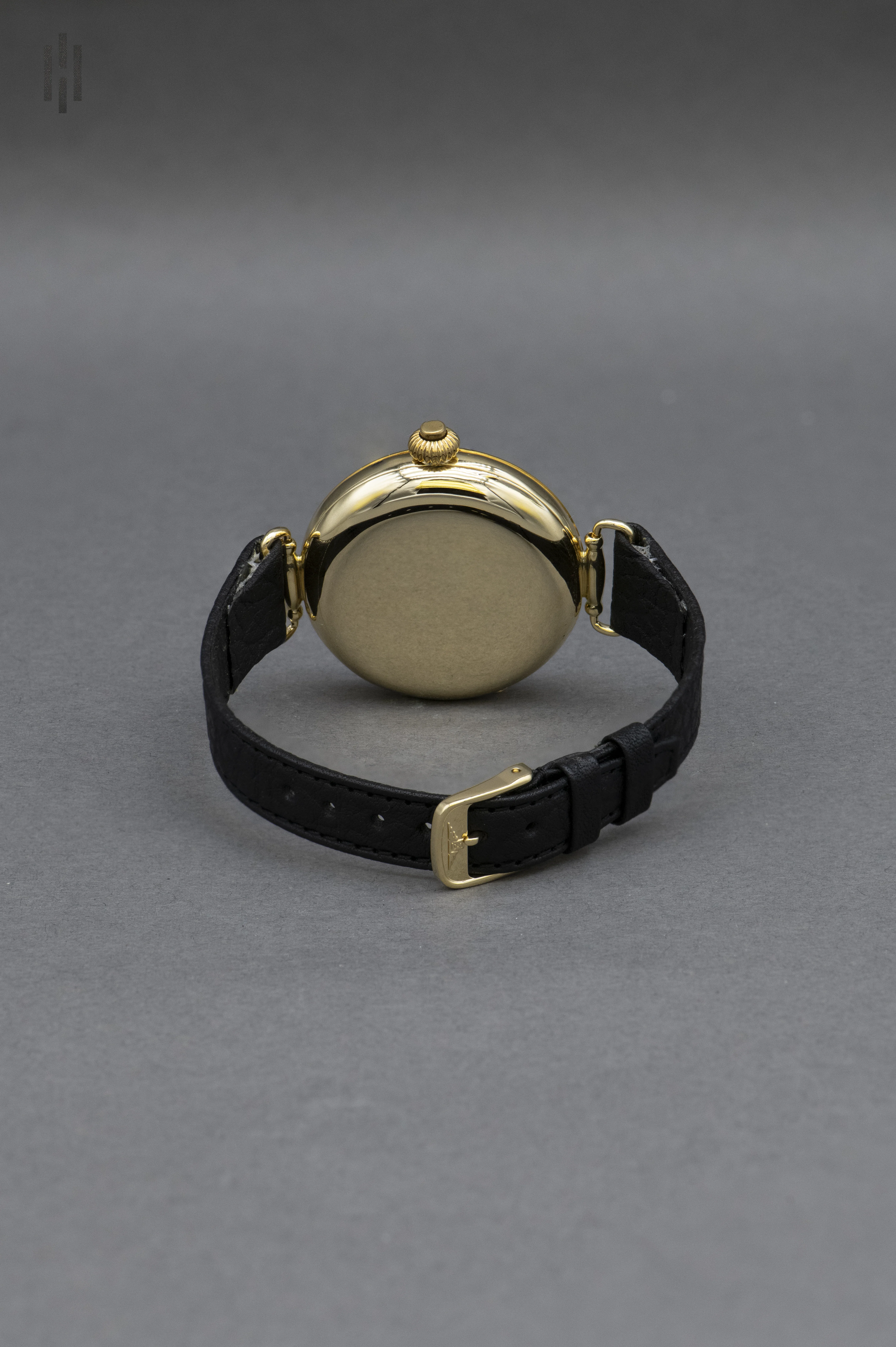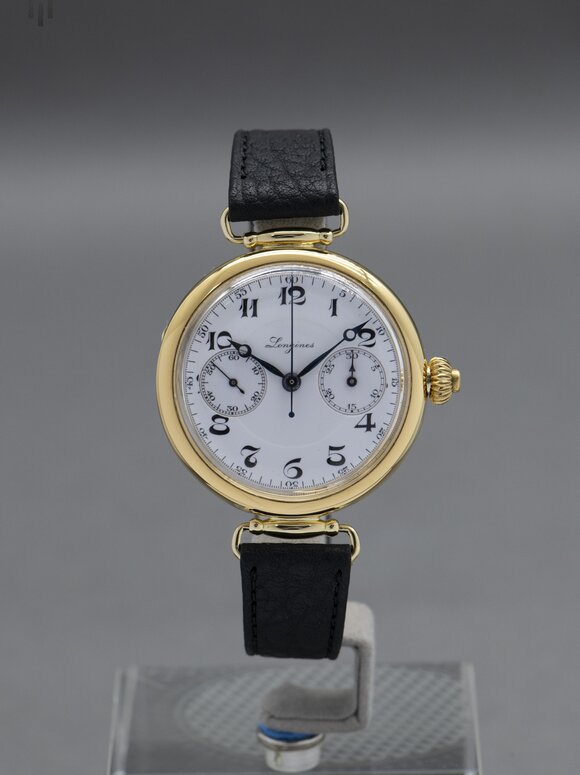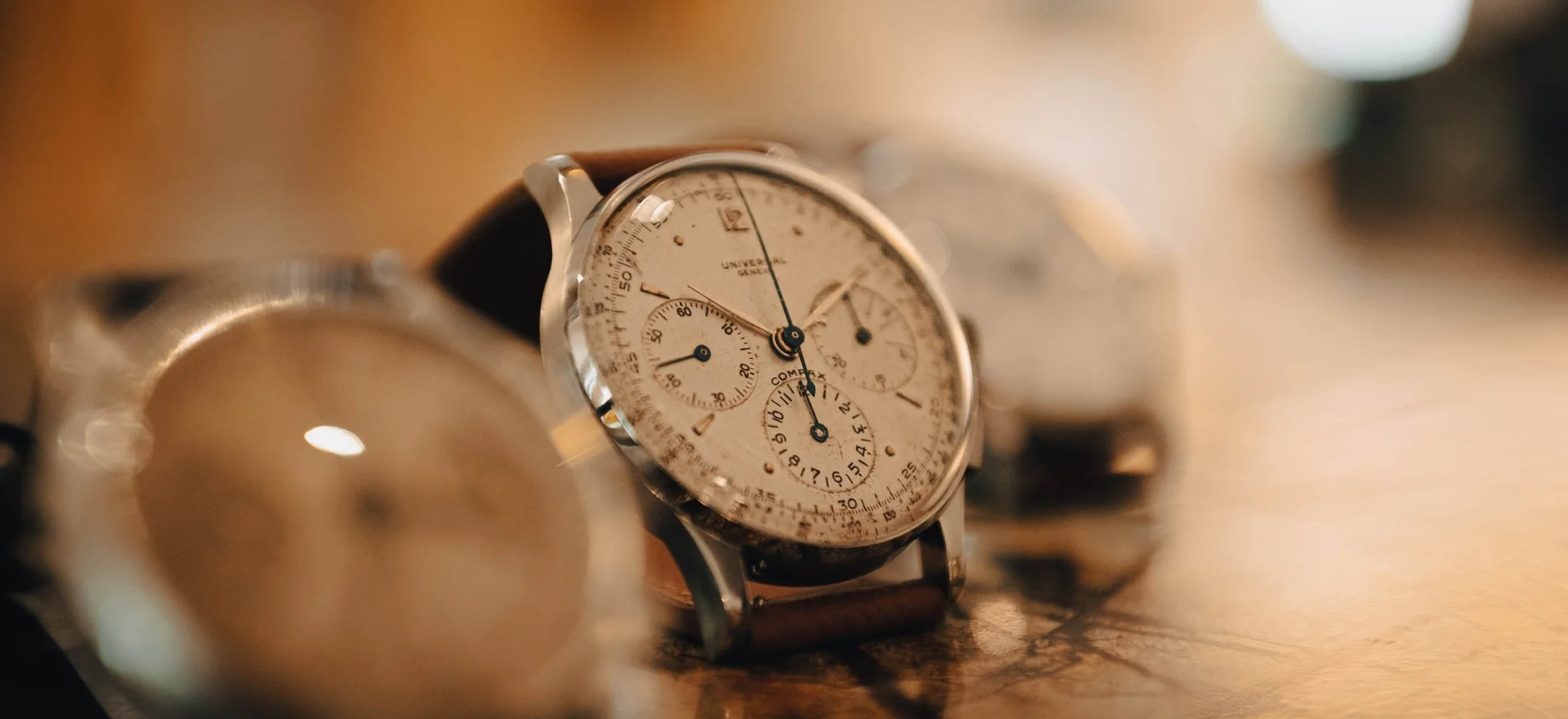 Back to overview
Back to overview Caliber 13.33Z is one of the first small-format chronograph movements ever developed for a wristwatch. The movement is characterized by an instantaneous minute counter in which the minute hand jumps one step forward exactly between the 59th and 60th second of a minute. On closer inspection, the hand-painted enamel dial reveals the artist's remarkable skill. A complete restoration, based on the expertise of the Longines Heritage workshop, is the reason for the exceptional condition of the gold case of this timepiece. The number of "Grand Prix" won by Longines up to the 1929 Barcelona Exhibition is engraved on the case back. These "exhibitions" were created to showcase their watches and movements, in particular the accuracy and degree of complication. Longines had won the "Grand Prix" a total of 9 times by the time this model was produced.
14'800 CHF


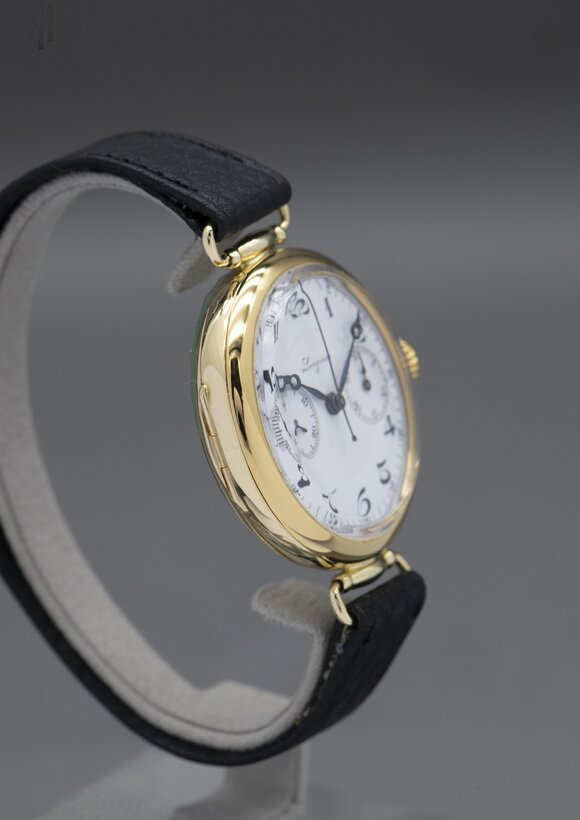
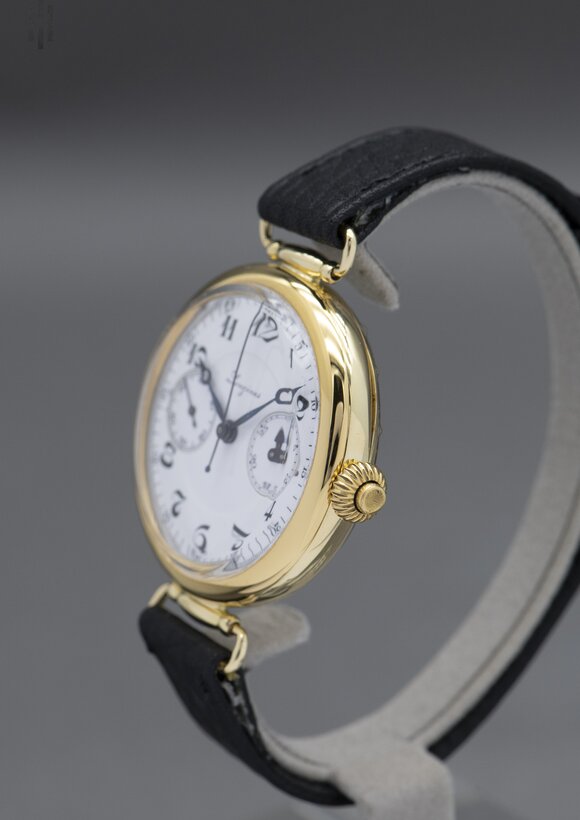

Caliber 13.33Z is one of the first small-format chronograph movements ever developed for a wristwatch. The movement is characterized by an instantaneous minute counter in which the minute hand jumps one step forward exactly between the 59th and 60th second of a minute. On closer inspection, the hand-painted enamel dial reveals the artist's remarkable skill. A complete restoration, based on the expertise of the Longines Heritage workshop, is the reason for the exceptional condition of the gold case of this timepiece. The number of "Grand Prix" won by Longines up to the 1929 Barcelona Exhibition is engraved on the case back. These "exhibitions" were created to showcase their watches and movements, in particular the accuracy and degree of complication. Longines had won the "Grand Prix" a total of 9 times by the time this model was produced.
14'800 CHF
